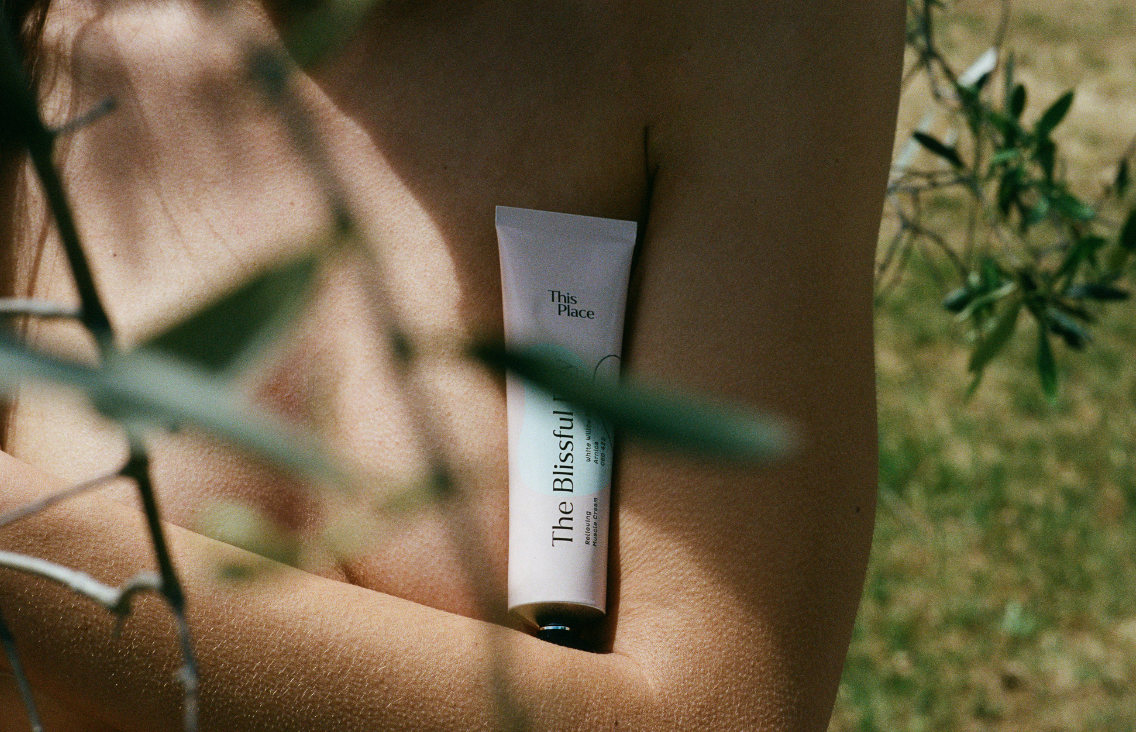The warm rays of sunshine, the chirping of the birds and the long summer days are enough to put many of us in a good mood. It’s tempting to want to bask in summer’s golden glow. Yet never underestimate the power of the sun’s rays upon our skin.
Light, airy clothing, a hat, sunglasses and ample sunscreen can protect us from the heat and sunburn. However, the best protection for keeping a cool head is to stick to the shade—or to stay indoors (even better when it’s air-conditioned!). When we’ve had too much sun and our skin starts to burn, there’s only one thing that seems to help: cooling off.
How does the sun affect our body and skin?
When it’s hot outside, our cardiovascular system is especially active, pumping blood to our arms, legs and the upper layers of our skin. It’s a process that allows heat to be released from our skin to protect the body from overheating. At the same time, UVA rays can dilate our blood vessels by releasing nitric oxide from the skin, thereby lowering our blood pressure [1].
Our body also reacts to sunshine and heat by sweating. The sweat glands in our skin release fluid, which evaporates to cool the skin naturally as it helps to lower our internal body temperature.
Excessive, unprotected sun exposure can lead to sunburn, depending upon skin type and where in the world we are when we’re exposed to the sun, as locations closer to the equator tend to receive stronger, more direct rays. Sunburn can damage the skin much like when it comes into contact with fire, leading to inflammation, skin irritation, pain and blisters and swelling, as well as fever, chills, nausea, headache and fatigue [2]. Even worse, the UV exposure from just a single sunburn can increase our risk for developing skin cancer.
Why it’s important to cool down our skin immediately
When our body heats up and shows signs of sunburn, it’s important to cool it off and soothe it as soon as possible. The high temperatures and the sun’s UV rays can damage nerve endings and cause pain. Cooling has a soothing effect that can also help reduce inflammation and the destruction of skin cells [3].
How to cool off from a sunburn
It’s by no means a new discovery to treat burned skin with cooling techniques. An Egyptian Smith Papyrus dating back to 1600 BCE recommended using resin and honey to treat burns. Ancient Chinese texts from 600 BCE described using tea leaf extracts and tinctures, and the Greek philosopher Celsus from the first century CE wrote about how wine and myrrh were popular home remedies for burns. The first description of using cold water for relief from burns came from an Arabian physician in the ninth century CE [4].
Cold water
Cold water is recommended as a good and easy option for when we seek relief from sunburn and the heat. Water’s cooling effect is not only due to the temperature of the water, but also because, similar to sweat, when it evaporates it leaves the body feeling cooler. It’s recommended that the water be at least 2-15º C and not ice cold [5].
By the way: We lose a lot of fluid through our skin in the heat, especially when we’re sunburnt. Our body also longs for water so it’s important to hydrate and compensate for the loss of fluids.
Cooling creams, lotions and gels
Conventional medicine often advocates for topical treatment with anti-inflammatory agents such as hydrocortisone for burns. These can be useful for reducing inflammation, especially in particularly severe burns.
For milder burns or when the body has started to feel overheated, gels or lotions with high water content are recommended to allow more liquid to evaporate onto the skin and leave it feeling cooler. Products that are too oily or heavy with fatty materials might aggravate the skin further because they can allow the heat to accumulate. Some after-sun treatments contain the active ingredient dexpanthenol to support skin regeneration [6].
Home remedies
Sometimes we prefer to seek quick sunburn relief using materials we have lying around the house. Light and minor sunburn without any blistering or open wounds might benefit from simple home remedies, though it’s always recommended to consult a doctor first.
- Yoghurt contains properties that might be able to cool and soothe sunburnt skin. According to a study, there are certain probiotics contained in yoghurt that could have a beneficial influence on the long-term effects of UV exposure and more specifically on skin aging [7].
- Cucumber slices have a very high water content that can have a beneficial effect on skin irritation and sunburn, and can relieve swelling and pain [8].
- Black and green tea has been shown to have anti-inflammatory properties, much like the active ingredient, cannabidiol (CBD). In addition, various studies have shown that components of black tea can reduce UVB-induced skin irritation and associated early damage to skin [9].
- Aloe vera has some scientists split down the middle. While some studies suggest that it can cool the skin, others suggest it does not [10].
Sources:
[1] Study: Sunlight lowers blood pressure
https://www.aerzteblatt.de/nachrichten/57293/Studie-Sonnenlicht-senkt-den-Blutdruck
[2] Sunburn (WebMD)
https://www.webmd.com/skin-problems-and-treatments/guide/sunburn
[3] A review of first aid treatments for burn injuries
https://www.academia.edu/12678215/A_review_of_first_aid_treatments_for_burn_injuries
[4] History of burns: The past, present and the future
https://www.ncbi.nlm.nih.gov/pmc/articles/PMC4978094/
[5] A review of first aid treatments for burn injuries
https://www.academia.edu/12678215/A_review_of_first_aid_treatments_for_burn_injuries
[6] Sunburn protection and first aid
[7] Clinical evidence of benefits of a dietary supplement containing probiotic and carotenoids on ultraviolet-induced skin damage
https://pubmed.ncbi.nlm.nih.gov/20545689/
[8] Phytochemical and therapeutic potential of cucumber
https://pubmed.ncbi.nlm.nih.gov/23098877/
[9] Photoprotective effect of black tea extracts against UVB-induced phototoxicity in skin
https://pubmed.ncbi.nlm.nih.gov/10546558/
[10] A review of first aid treatments for burn injuries
https: // www. academia.edu/12678215/A_review_of_first_aid_treatments_for_burn_injuries

